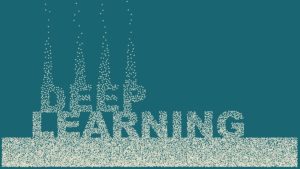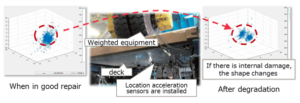
Crumbling Infrastructure Gets an AI Assist

via Shutterstock
A deep learning application developed by Japan’s Fujitsu Ltd. seeks to assist structural engineers in assessing the state of degradation in aging bridges and other infrastructure. The framework applies sensor data analysis technology that can help gauge internal damage to bridges and fine tune maintenance requirements.
Fujitsu Laboratories said its deep learning platform aggregates vibration data collected by surface-mounted sensors to help gauge structural deterioration to improve maintenance of crumbling infrastructure. The approach could replace or augment visual inspections by probing deeper to determined levels of internal structural damage.
While the state of disrepair among U.S. bridges is well documented, with an estimated 130,000 bridges either structurally deficient of functionally obsolete, Japan has another problem the technology could address: a lack of structural engineers to monitor its sprawling and aging infrastructure. Bridge inspections also are expensive, making them a low priority for cash-strapped municipalities.
Fujitsu said its proprietary deep learning approach leverages time-series data using an analytics method called topical data analysis. Earlier research by the company addressed the problem of accurately classifying volatile time-series data generated by Internet of Things and other devices. Previously, it was difficult to discern patterns in these data.
Fujitsu Laboratories touts its deep learning approach as using advanced mathematical techniques to extract geometric features from time-series data, enabling highly accurate classification of raw data.
Researchers found they could extrapolate data captured by an acceleration sensor at a single location to estimate the level of bridge deterioration “across a wide area of a bridge’s interior….” The approach also would allow early detection of internal stresses so that repairs could be scheduled before deterioration spread.
The approach was validated using data obtained from verification tests of fatigue degradation of bridges carried out by the Research Association for Infrastructure Monitoring System, which conducts research into technologies used in industrial applications.
Fujitsu combined its deep learning approach with vibration data collected from acceleration tests. “The results showed that the geometric characteristics extracted from the vibration data by this technology would appear as a single cluster when the bridge was intact, but the shape changes when the bridge had developed internal damage,” the company reported.
Researchers also confirmed the degree and rate of deterioration that was calculated by converting the geometric characteristics to numerical values corresponding with the results measured by strain sensors embedded within a bridge deck.
Tokyo-based Fujitsu (TYO: 6702) said Monday (Aug. 28) its deep learning application would be detailed at the Japan Society of Civil Engineers 2017 Annual Meeting to be held at Kyushu University from Sept. 11 to 13. It plans to conduct trials of using vibration data from bridges with the goal of deploying the technology as early as 2018.
Recent items:
Before the Next Disaster Strikes, Get Better Data Science
The Data of Things: How Edge Analytics and IoT Go Hand in Hand




























